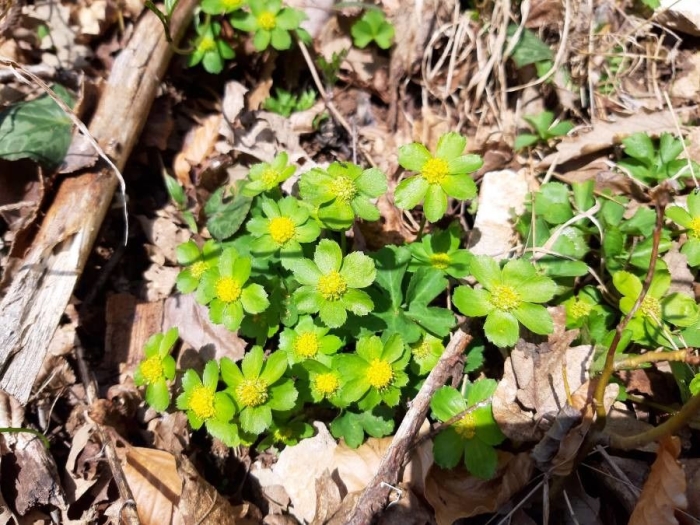Hacquetia
(Sanicula epipactis)
Hacquetia (Sanicula epipactis)
/
/

Shkuratovskyi Volodymyr
CC BY-SA 4.0
Image By:
Shkuratovskyi Volodymyr
Recorded By:
Copyright:
CC BY-SA 4.0
Copyright Notice:
Photo by: Shkuratovskyi Volodymyr | License Type: CC BY-SA 4.0 | License URL: https://creativecommons.org/licenses/by-sa/4.0/ | Attribution: Shkuratovskyi Volodymyr (cc-by-sa) | Rights Holder: Shkuratovskyi Volodymyr | Publisher: PlantNet | Date Created: 2020-03-29T13:11:11Z | Title: Sanicula epipactis (Scop.) E.H.Krause: flower | Notes: |


































Estimated Native Range
Summary
Sanicula epipactis, commonly known as Hacquetia, is a deciduous perennial herb native to the understory of deciduous forests and the edges of woodlands in Europe, particularly thriving on calcareous substrates. It reaches a modest height of about 30 cm, with glossy green, heart-shaped leaves that fully develop post-flowering. The plant’s most distinctive feature is its inflorescence: dense spherical umbels 4 cm in diameter, composed of tiny yellow florets surrounded by showy lime green bracts, which bloom in late winter to early spring, providing early color in the garden.
Hacquetia is valued for its early spring flowers and its ability to thrive in shaded woodland gardens, mimicking its natural habitat. It is hardier than often reported, with successful cultivation down to USDA Zone 3. It has been recognized with the Royal Horticultural Society’s Award of Garden Merit, indicating its exceptional qualities for garden use. In cultivation, Hacquetia prefers part shade to full shade and medium moisture levels in well-drained soils. It is an excellent choice for naturalistic plantings, shade gardens, and for underplanting deciduous trees. While generally low-maintenance, it can be susceptible to slug damage when young.CC BY-SA 4.0
Hacquetia is valued for its early spring flowers and its ability to thrive in shaded woodland gardens, mimicking its natural habitat. It is hardier than often reported, with successful cultivation down to USDA Zone 3. It has been recognized with the Royal Horticultural Society’s Award of Garden Merit, indicating its exceptional qualities for garden use. In cultivation, Hacquetia prefers part shade to full shade and medium moisture levels in well-drained soils. It is an excellent choice for naturalistic plantings, shade gardens, and for underplanting deciduous trees. While generally low-maintenance, it can be susceptible to slug damage when young.CC BY-SA 4.0
Plant Description
- Plant Type: Herb
- Height: 0.3-0.5 feet
- Width: 0.5-1 feet
- Growth Rate: Moderate
- Flower Color: Yellow, Green, White
- Flowering Season: Spring
- Leaf Retention: Deciduous
Growth Requirements
- Sun: Part Shade, Full Shade
- Water: Medium
- Drainage: Medium, Fast
Common Uses
Bee Garden, Butterfly Garden, Drought Tolerant, Low Maintenance, Rock Garden
Natural Habitat
Understory of deciduous forests and edges of woodlands in Europe, particularly on calcareous substrates
Other Names
Common Names: Grüne Schaftdolde
Scientific Names: , Hacquetia epipactis, Sanicula epipactis, Astrantia epipactis, Dondia epipactis, Dondisia epipactis,
GBIF Accepted Name: Sanicula epipactis (Scop.) E.H.L.Krause